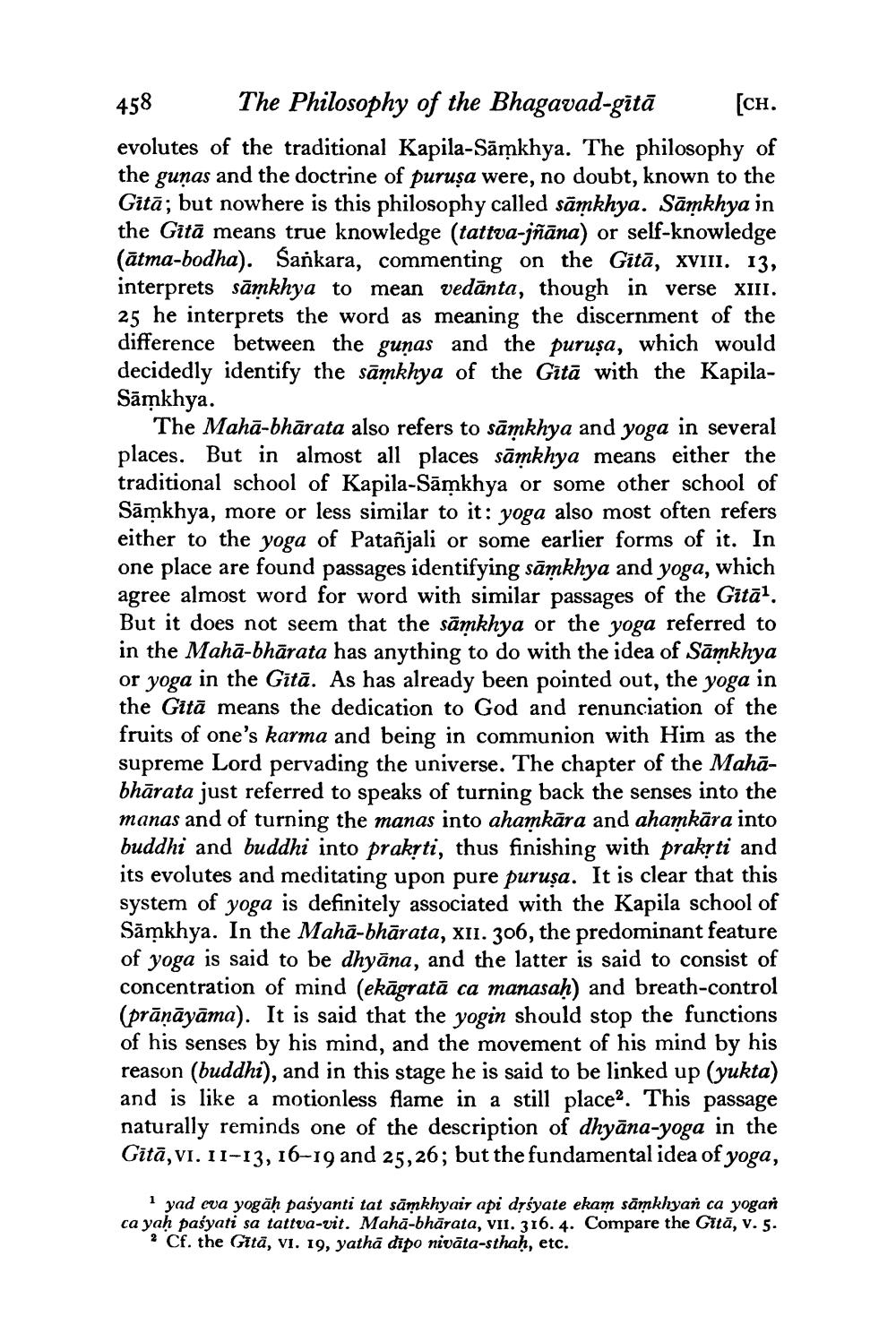________________
458
The Philosophy of the Bhagavad-gītā
[CH.
evolutes of the traditional Kapila-Samkhya. The philosophy of the gunas and the doctrine of puruşa were, no doubt, known to the Gitā; but nowhere is this philosophy called samkhya. Samkhya in the Gita means true knowledge (tattva-jñāna) or self-knowledge (atma-bodha). Sankara, commenting on the Gitā, XVIII. 13, interprets sāmkhya to mean vedanta, though in verse XIII. 25 he interprets the word as meaning the discernment of the difference between the gunas and the puruşa, which would decidedly identify the samkhya of the Gita with the KapilaSāmkhya.
The Mahā-bhārata also refers to samkhya and yoga in several places. But in almost all places sāmkhya means either the traditional school of Kapila-Samkhya or some other school of Samkhya, more or less similar to it: yoga also most often refers either to the yoga of Patañjali or some earlier forms of it. In one place are found passages identifying samkhya and yoga, which agree almost word for word with similar passages of the Gitā1. But it does not seem that the samkhya or the yoga referred to in the Mahā-bhārata has anything to do with the idea of Samkhya or yoga in the Gītā. As has already been pointed out, the yoga in the Gita means the dedication to God and renunciation of the fruits of one's karma and being in communion with Him as the supreme Lord pervading the universe. The chapter of the Mahabharata just referred to speaks of turning back the senses into the manas and of turning the manas into ahamkāra and ahamkāra into buddhi and buddhi into prakṛti, thus finishing with prakṛti and its evolutes and meditating upon pure purușa. It is clear that this system of yoga is definitely associated with the Kapila school of Samkhya. In the Mahā-bhārata, XII. 306, the predominant feature of yoga is said to be dhyana, and the latter is said to consist of concentration of mind (ekāgrată ca manasaḥ) and breath-control (prāṇāyāma). It is said that the yogin should stop the functions of his senses by his mind, and the movement of his mind by his reason (buddhi), and in this stage he is said to be linked up (yukta) and is like a motionless flame in a still place2. This passage naturally reminds one of the description of dhyana-yoga in the Gitā, VI. 11-13, 16-19 and 25,26; but the fundamental idea of yoga,
1 yad eva yogaḥ pasyanti tat sāmkhyair api dṛśyate ekam sāmkhyan ca yogan ca yaḥ pasyati sa tattva-vit. Mahā-bhārata, vII. 316. 4. Compare the Gitā, v. 5. 2 Cf. the Gitä, VI. 19, yatha dipo nivāta-sthaḥ, etc.




